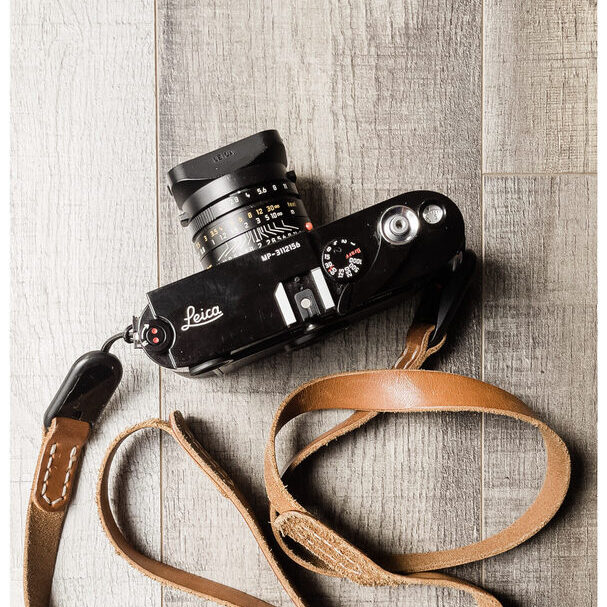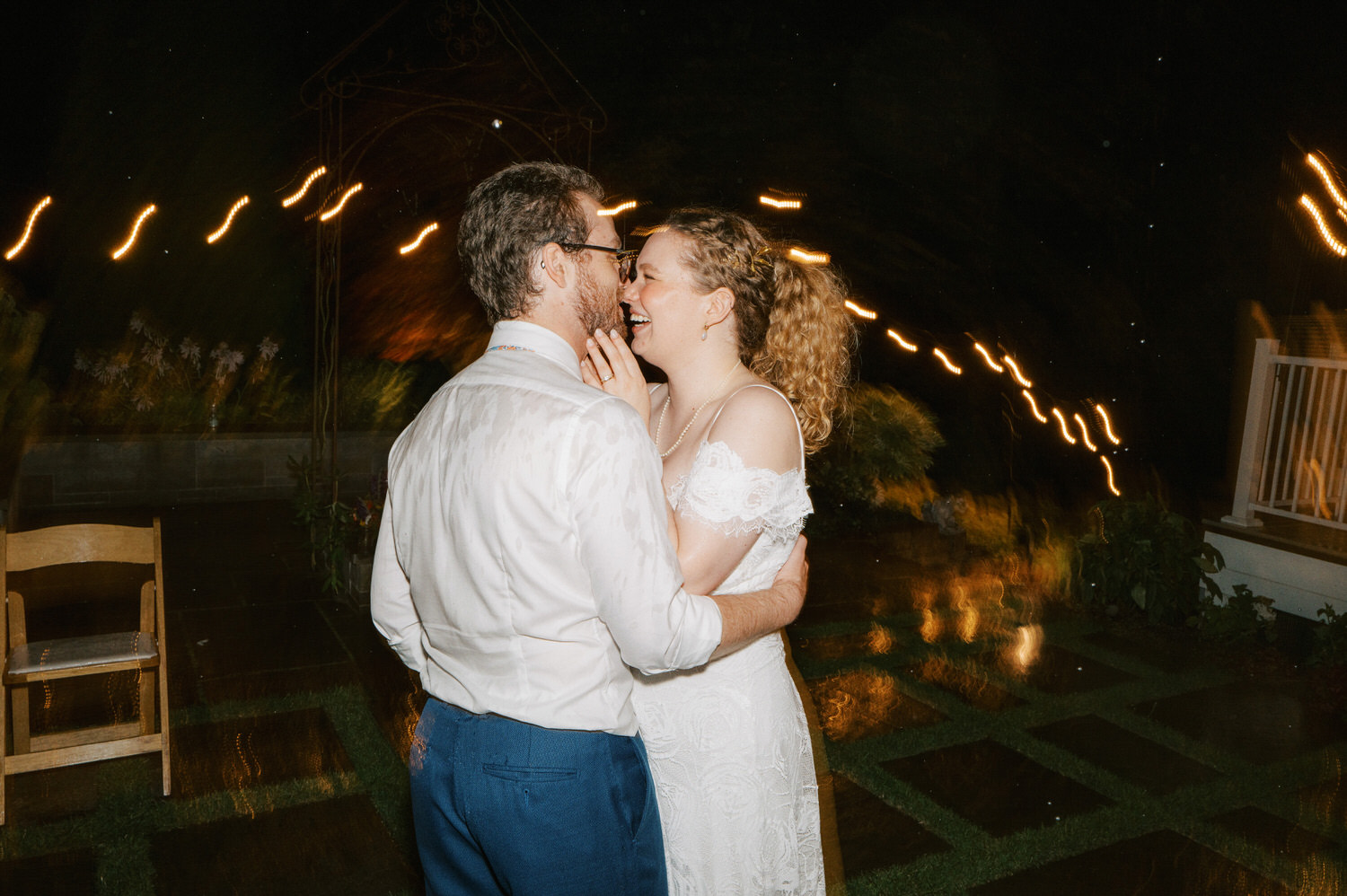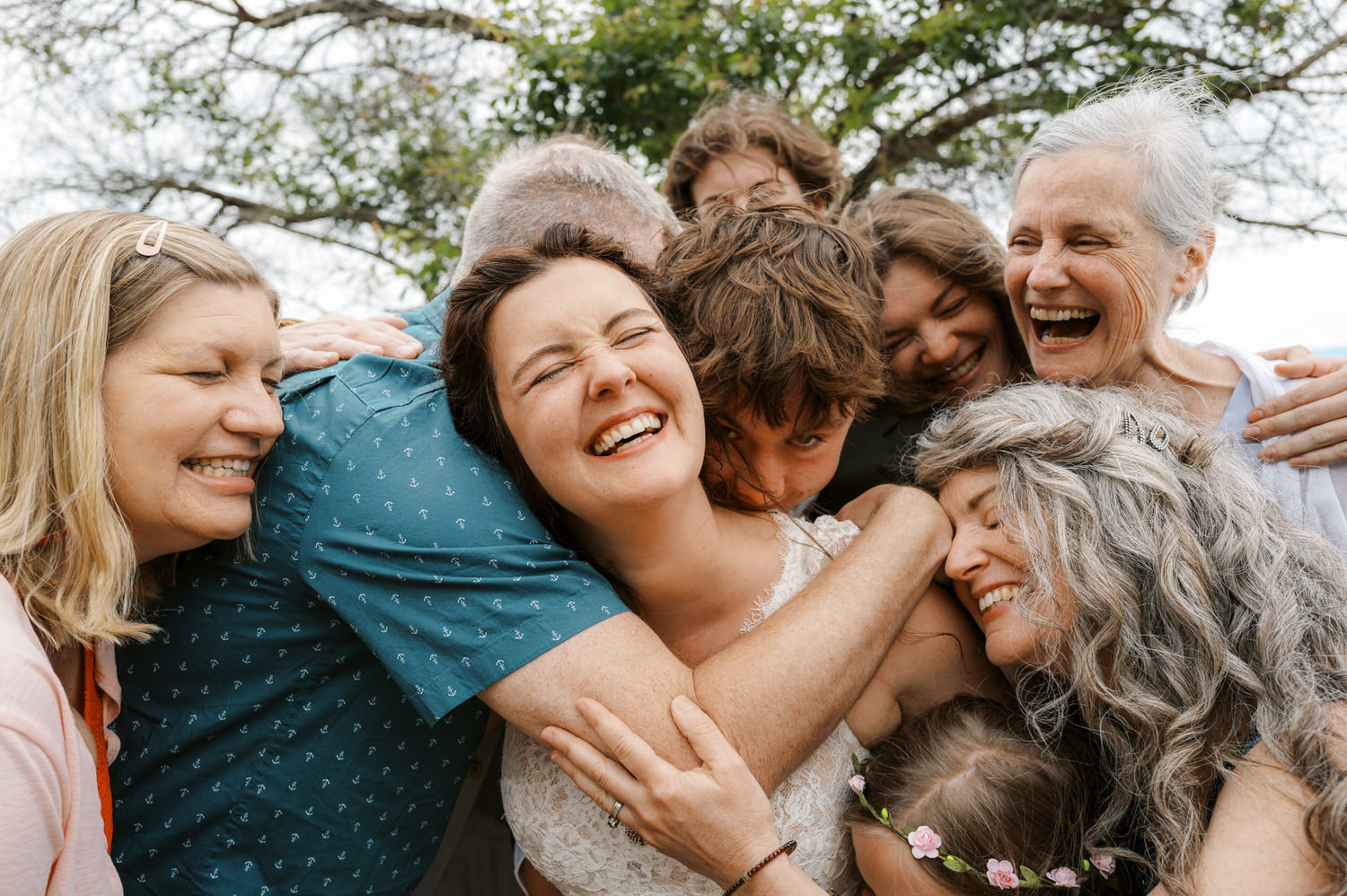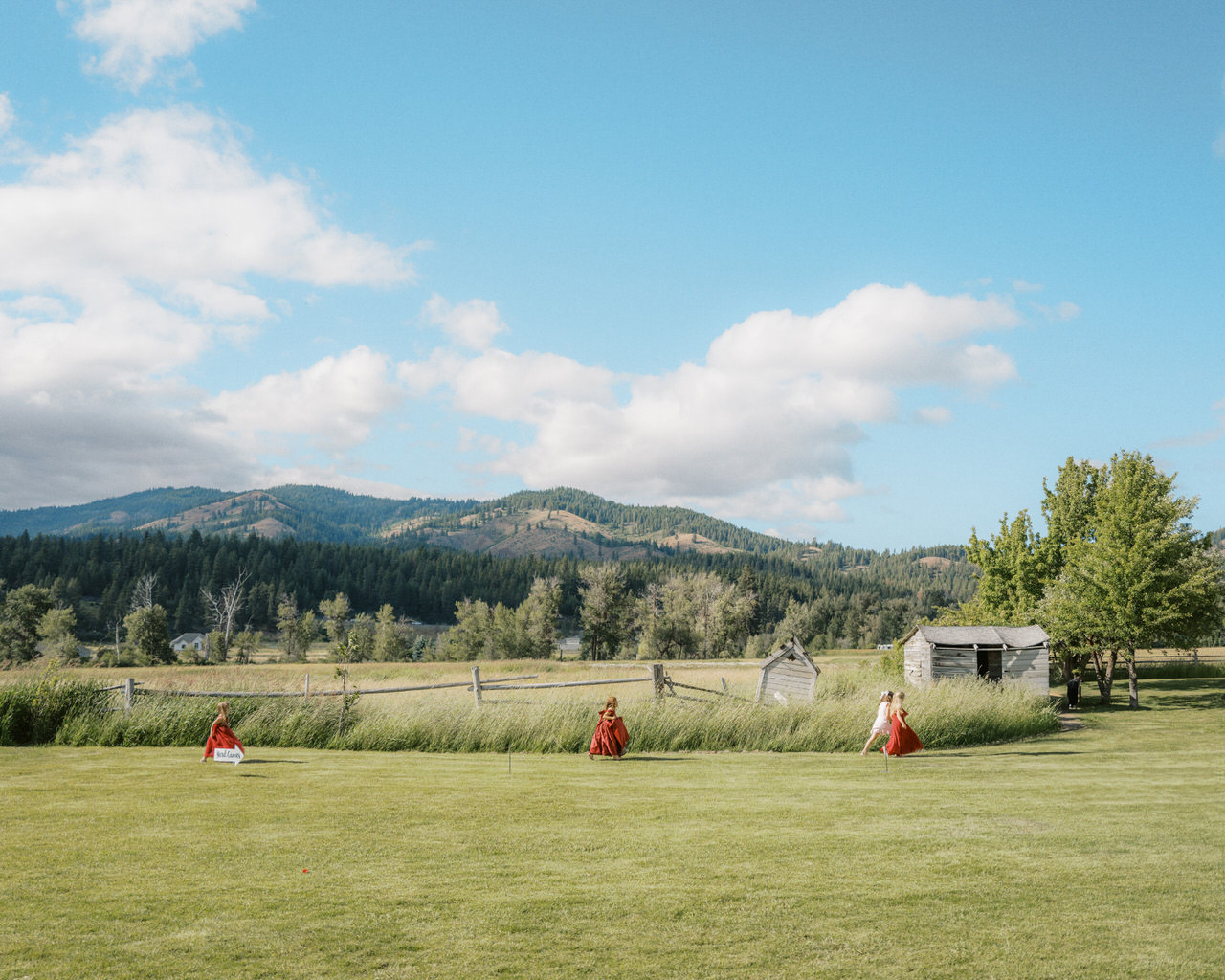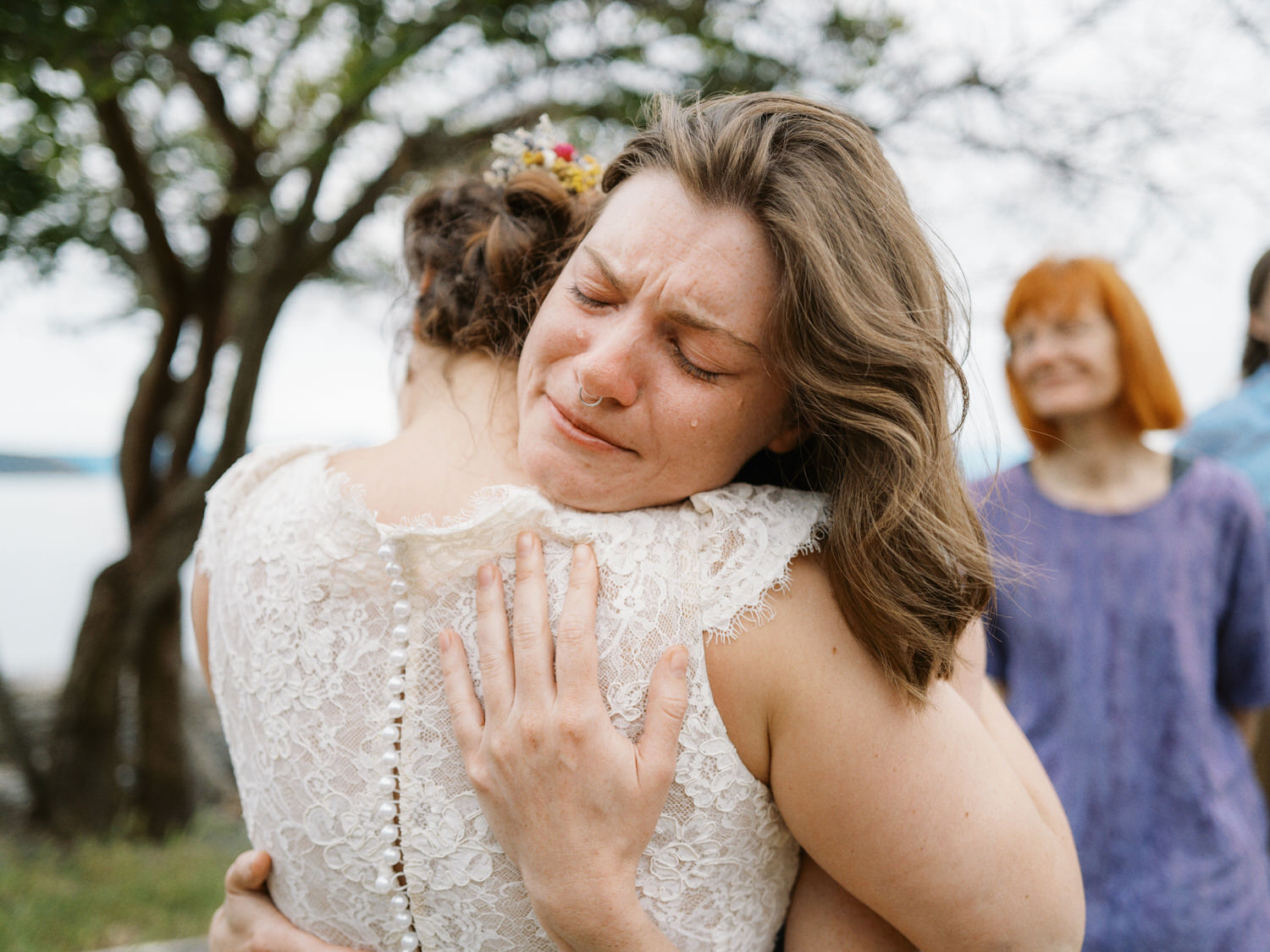I built my Seattle Wedding Photography business on the Fujifilm X System. I felt, and still feel, that Fuji’s X series of cameras provides a fantastic balance of performance and price. The current generation of bodies have caught up to the competition when it comes to autofocus performance1 , and the price point for Fuji’s professional, fast lenses, is in my opinion a better deal for working photographers2.
So, if I built my wedding photography business on the backs of the Fuji System, and I remain mostly satisfied overall, why did I sell off most of my Fujifilm gear and switch to become a Leica Wedding Photographer?
Documentary Wedding Photography — Hitting a Creative Wall
Like a lot of photographers, and especially those who work a documentary style, I had long aspired to a Leica. The simplicity of the design, the mechanics, the legacy, all factors that attracted me to the Leica system. In early 2023 I finally was able to buy my dream camera3 — the 35mm film Leica MP.
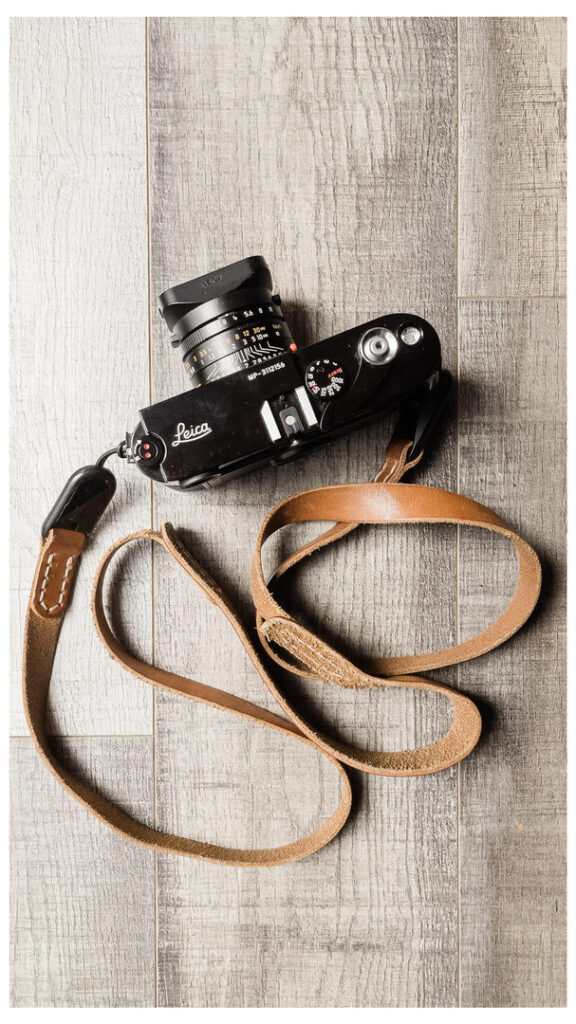
At the same time I was becoming dissatisfied with my Fujifilm GFX system. I owned a GFX 50R and a few lenses, and while I loved the image quality the medium format sensor produces, I was constantly let down by the autofocus system. And the size of the camera led to me rarely using it on wedding days — it was just too heavy to carry around for very long.
And finally, in the middle of the busiest wedding season of my career, I found myself hitting a creative wall. This was in some sense due to burnout — I learned after 2023 that I need to stop double booking wedding weekends — but I also started to recognize that I was leaning too much on my gear to do the work.
My style requires maximum mental focus. I need to be aware of what’s happening in front of me, while also conscious of everything happening off to the side. The bride and groom are playing lawn games and laughing in front of my eyes, but I can sense something funny is happening to my right, and a kid is causing mayhem on my left, and behind me the parents of the groom are at the bar.
But during this creative rut, I realized I was putting my X-T5s into AI tracking autofocus, burst mode, and then just zoning out while the camera did the work and I figured I’d find the photos in the cull later.
I was becoming disengaged from the image making process.
That’s when I started to think about a digital Leica. I had gotten enough reps on my film Leica (probably 50+ rolls of film at that point) to know that the rangefinder focusing system works for me and my brain. And, as I already had a 35mm and a 50mm lens for the film Leica, getting a digital one wouldn’t necessarily mean I needed a bunch of new lenses.
But more than that, I recognized how connected I felt to the process of making photographs when using the Leica. I wasn’t spending time navigating menus or playing around with autofocus settings. When I used the Leica there was only the image making process, nothing else got in the way.
So I sold off my GFX kit, and used that to fund the purchase of an M114.
Immediately I knew I was onto something and the more I used my M11 paired with my Voigtlander 50mm f1.2 lens, the more it started to take over. Something about a 50mm on a Leica feels right to me, the frame lines really give you a different experience than any other camera. By seeing more than what you can fit in the frame, you feel very connected to the process of making the image. Compositions feel more intentional because you make very definitive decisions about what you’re cropping out.
After shooting the M11 for the back half of my 2023 season, I started to seriously think about complimenting it with a Leica Q3. For a few years I had exclusively shot the 28mm focal length. I love 28mm for my documentary approach, it feels just a little wider than the more “normal” view of a 35mm lens, while also still feeling real.
So, after a few years of one of my cameras being exclusively a 28mm lens, I started to think if I only ever use the 28mm focal length, then why not use the best 28mm lens on the market? And if I was going to get a Q3, I would be transitioning my wedding kit primarily to Leica. So I sat down to think through whether this would be the right decision for me and my business.
The decision came down to 3 factors:
- The quality of the digital files and the editing capabilities
- The size and weight
- The photography first creative experience
Leica Wedding Photography Image Quality
Fujifilm’s X series is notorious for the poor performance of the X-Trans digital files in Adobe Lightroom. You can find hundreds of blog posts, reddit threads, and YouTube Videos about this, but to sum up — Adobe’s Raw engine has never done a great job of interpreting the X-Trans files. Capture One on the other hand, does an amazing job with Fuji files. And while Adobe has made the problem less severe (and there are plenty of photographers who use Fujifilm and Lightroom) once you see the difference in the files it’s hard to go back.
The problem is that Capture One has really fallen behind in recent years. From 2020 – 2023, I edited all my professional work with Capture One. But in that time Adobe made huge leaps forwards with their feature set. AI powered masking, selection, and removal in particular, is years ahead of Capture One. And, some of the major tools in Capture One — like their skin tone tool and built in fine color tuning — no longer are strong differentiators due to Adobe’s introduction of the point color tool.
But, worse of all, Capture One has become a disastrously poor performer on the Apple Silicon machines. No matter what settings I tweak, there is always a major lag in the program. Even the simple act of adjusting white balance or exposure would have a several second delay. If you’re editing 500 images from a wedding, that delay adds up to several hours of extra editing work a week.
On the other hand, Leica does not use a proprietary raw format like Fuji, Leica cameras output DNG files, a standard developed by Adobe. I’ve found that the Leica files work lovely in Lightroom and in fact they are the best performing RAWs I’ve ever shot. Not just in their noise and sharpness, but things like shadow and highlight recovery are just much higher performing than with the Fuji files. Combined with Adobe’s masking tools, I feel my images are better and taking less time to edit than in Capture One.
So, while the investment up front in terms of the camera gear is significant, I found that the Leica files saved me a lot of time in editing, and got me closer to the look I wanted faster. This time saved on the backend saves dozens of hours over the course of the wedding season.
The Size and Weight Factor — Saving My Back
John Dolan compares being a wedding photographer to playing in the NFL, you only “work” 15 to 20 Saturdays a year5. But you have to live your life in such a way that you are physically, mentally, and emotionally ready for those days.
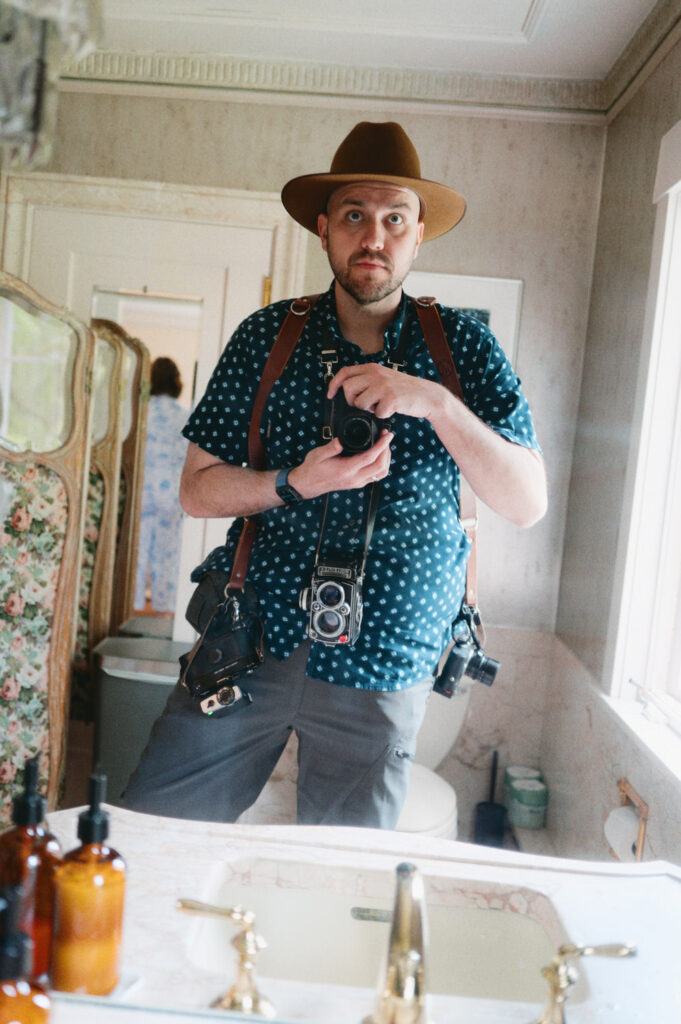
I have Ankylosing Spondylitis, an inflammatory condition that affects my hips and lower back. And while I’m lucky in that my case is mild and at this point well controlled, flare ups are a possibility. 2-3 extra pounds can be the difference between being able to walk the day after a wedding, or being stuck on the couch for a few days with spasms.
Fuji’s camera bodies and lenses — due to their APSC sensors — are significantly smaller and lighter than their main competition. The Fuji X-T5 with the 33mm f1.4 lens weighs a half pound less than the equivalent Sony setup6 And while it may not seem like much, switching from an X-T5 and the 18 f1.4 to the Leica Q3 saves another half pound in weight, while also being a fair amount smaller. Same for the M11.
These margins add up when carrying 2-4 cameras around for 8-10 hours over 20 weddings in a season. While Leicas are notoriously expensive, there’s just simply no other camera brand that packs this level of image quality into so small a package.
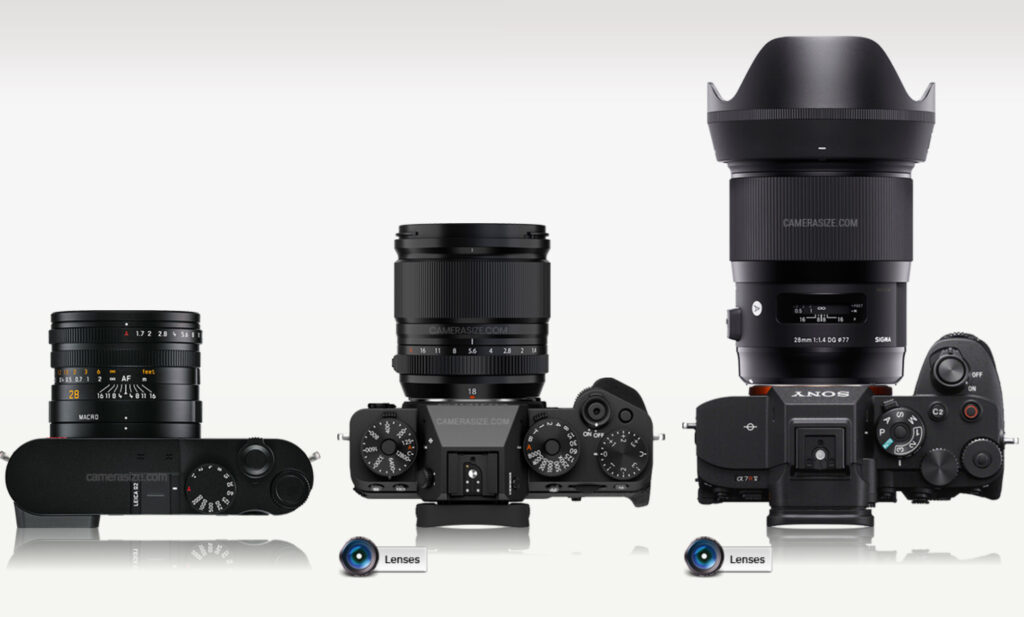
By switching my kit over to Leica, I can carry 2-4 cameras at a time with a total weight just slightly more than a Canon R whatever with the 24-70 f2.
The Leica Experience — Photography First
Over the last few years I felt the Fujifilm brand start to loose its way a bit as they chased market share in the video space. This really comes down to one camera — the X-Pro. The X-Pro3 was the camera that made me switch to Fujifilm in the first place, a photographer centric camera that really got out of the way and let me focus on making photographs. For my money, the X-Pro series are the most beautiful digital cameras ever made.
But Fujifilm seems to have discontinued the line, or at least put it on hold for their current generation of sensors. Instead they’ve focused on making a major push with the XH line, a series of cameras that — to me — seems antithetical to the brand Fujifilm had established. Fuji set itself apart from the competition with its retro styled cameras bodies with lots of physical dials and controls, and now they’re making Sony clones.
I for one stuck with the XT line and its retro style, especially with the apparent end of the X-Pro line7.I love my X-T5 as a tool, and it’s a great video camera, but as mentioned before — I don’t find myself as connected with the process of making photographs when I use it. The AF system takes over and there are moments where I just go on autopilot rather than make conscious decisions about the photographs I’m making.
On the other hand the Leica system — at least the M and Q lines what I’m using — are photo first cameras. The M11 doesn’t even do video, and of course the M series are all manual focus. The experience of using these cameras makes me feel more connected to the process of image making, I have to stay in the moment because the cameras require me to. When using the M system, you have to be 100% focused on the action of making a photography, you can’t be half-engaged. The camera requires you to be focusing, composing, and metering all at the same time. You can’t just let it take over.
And the Q3, while competent with autofocus, is not so good that I can just turn tracking on and let it do it’s thing. I still have to be very engaged with the camera, and I often find myself manually or zone focusing the camera the same way I would for street photography.
Leica — The Best Fit for My Wedding Photography
So, when taking these three factors into account: the ease of editing the files, the the size and weight, and the overall experience, I felt that moving my kit to Leica made sense for me. I’ve kept one of my X-T5s and my trio of f1.4lenses (18, 33, 56) for video work and has my wedding backup/when I find I need autofocus at the 50/85mm focal lengths.
But in the year since switching I’ve really felt an evolution in my photography that I don’t think would have happened if I’d stuck with Fuji. The cameras forced me outside my comfort zone and exploded me out of my creative rut. When they say gear doesn’t matter, they are right in the sense that a great photographer can make great photos with any camera.
But in another aspect gear does matter. While I think I would have made great photographs with fuji, I would have made different great photographs. The Leica’s have changed how I shoot for the better. And now I can’t imagine going back.
- Admittedly Sony and Canon are probably still better, but at this point my X-T5 basically never misses, so those performance differences are on the margins for wedding photography though may be more relevant in sports or other genres where the absolute best autofocus is paramount ↩︎
- The f1.4 series of prime lenses can be had in the price range of $600-999 USD. The Sony 50mm 1.4 costs double its Fuji counterpart ↩︎
- Thanks to getting very lucky on eBay. ↩︎
- Where I got lucky a second time with a very good price on eBay. ↩︎
- I know there are wedding photographers who work more than this but I don’t believe I can produce the quality of work I do working this much. ↩︎
- A7 IV + 50mm f1.4 G Master lens. ↩︎
- If Fujifilm had just released an X-Pro4 with the current generation of sensors, I probably wouldn’t have switched brands ↩︎
